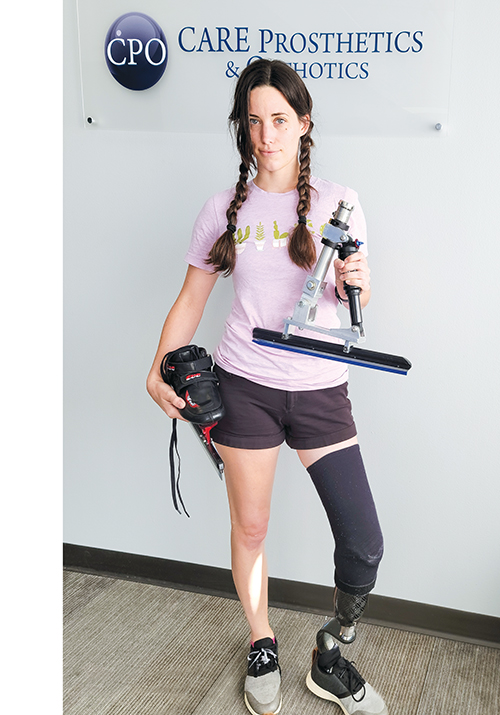If it weren’t for COVID, Caitlin Conner might have become the first American leg amputee to step onto the ice in speed skates. That’s been her objective since 2019, when she recruited an engineering professor and a team of undergraduates to design a racing skate for her prosthetic leg. Then the pandemic sent everybody home, and the project went into cold storage for 18 months. By the time the finished prototype arrived last December, she’d been lapped: A Marine veteran named Annika Hutsler had posted video of herself blading across a rink.

If Conner felt any disappointment, it passed quickly. When it comes to speed skating, her mantra is: The more amputees, the merrier.
“I want to turn this into the next Paralympic sport,” she says. “You really don’t see any parasports involving ice. There’s sled hockey, but nothing where anybody is upright, and I think that’s a shame. Something about going fast and turning left just sounds great to me.”
Although Conner has been figure skating on her prosthesis for several years, speed skating presents a different set of challenges. To begin with, racers generate much of their speed and control in the ankle. It wasn’t easy to design a skate that could replicate the necessary biomechanics for a prosthetic ankle.
“We had to break it down to the basics,” Conner says. “What does an ankle do on the ice? What does it do on the ground? What can our prosthetics do, and what do they lack?”
The final product approximates an ankle’s strength and spring via a mechanism that resembles a mountain bike’s shock absorber. This solution was so different from the original drawings that when Conner unboxed the prototype, she couldn’t tell the front end of the skate from the back. “The students sent a user manual and everything,” she laughs. “I didn’t read it, of course; I just wanted to throw it on and try it out.”
Unlike high-topped figure skates, speed skates are low cut, leaving the ankle exposed—and that can pose serious danger when the blades are flying. “It raises the stakes a lot,” Conner says. “If I come in at just the wrong angle with my prosthetic leg, I could cut myself without even realizing it. I don’t want to lose my other leg. I’ve got to make sure I keep an exact distance between my skates when I cross over.”
So when Conner watches the Winter Paralympics this month, will she be dreaming of winning gold at a future Games?
“It takes a lot to start a new Paralympic sport,” she says. “You need a lot of different countries involved, and it can’t only be amputees—we’d need classifications for people with cerebral palsy, visually impaired, and so on. It has to be a worldwide movement. But we have to start somewhere, right? This is just an experiment. I don’t mind being the guinea pig.”
More Amplitude articles about Caitlin Conner:
“Caitlin Conner Rocks the Rex Factor,” September 16, 2020
“Amputee Clothing Gets a Life From Uniteable,” March 3, 2021



